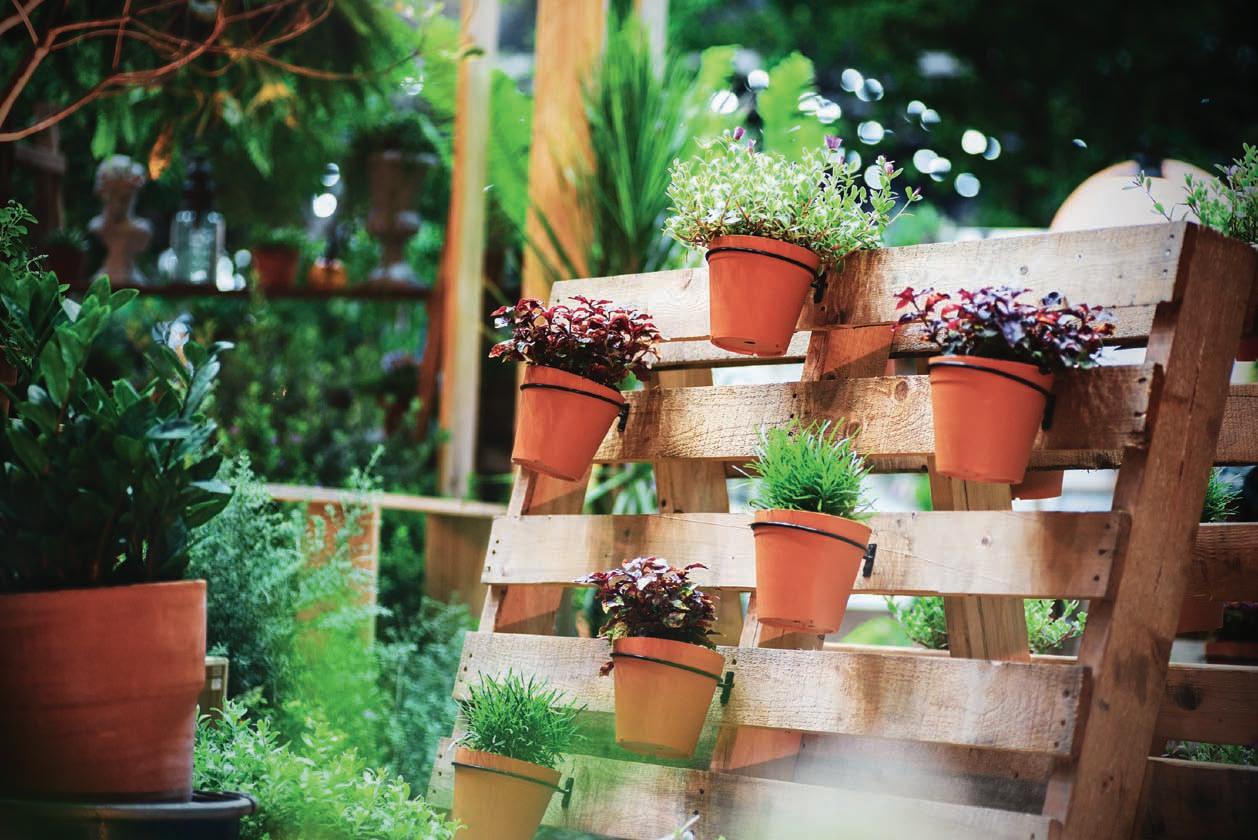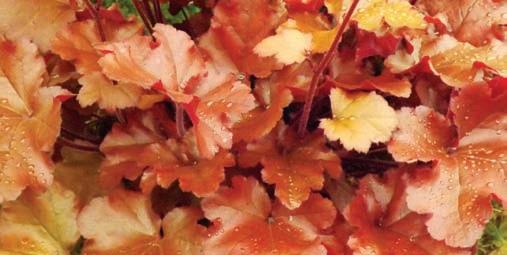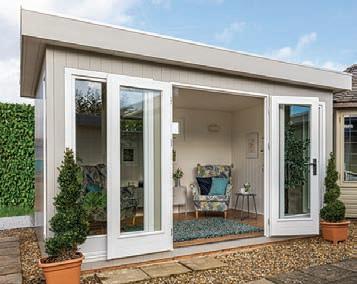
5 minute read
GARDENS
Life recycle
From composting to pallet pimping, gardener Elly West is promoting the ethic of sustainable outdoor space –it’s less expensive, it allows the repurposing of materials and products and allows your garden to be more self-dependent
Advertisement
Two things have got me thinking this month about recycling opportunities. The first is some building work on my house, at the end of which I was left with a skip loaded with rubbish, including five or six pallets to get rid of. The second is the introduction in North Somerset of a paid-for green waste collection, as I live in the minority of council districts that have offered this service for free up until this year.
We all know how important recycling is, and most people who love their gardens tend to be ecologically aware and take this on board without question. However, while we may not get a lot of pleasure from dutifully sorting out our recycling bins ready for the weekly collection, recycling in the garden can be a much more positive and enjoyable experience. I love seeing ideas on social media, and elsewhere, for garden projects that upcycle unwanted objects. It’s fun to personalise your outdoor room. Everything gets softened by planting and you can move things around and experiment with colour in a way that you may not want to in your indoor space.
I advertised my leftover pallets on a local WhatsApp group and they were snapped up within the hour by people wanting to use them in their gardens, which makes me much happier than putting them in the skip or going to the effort of chopping them up for firewood. But I couldn’t resist keeping one to use in my own garden; I’m just not sure how yet. Maybe a planter? Or perhaps a bench? A table? A pallet is ideal for a rustic planter when stood on its side. With very little adaption it creates natural shelves for plant pots that are ideal for herbs and trailing plants in a sunny spot. Paint in whatever colour you like, or leave it natural then hang it on a wall or simply lean against a hard surface.
Ladders are another good find for upcycling and reusing in the garden. A small wooden stepladder is ideal as you can place pots directly on the treads, or you could hang plants from the rungs to create a tiered display. So if you’re looking for an Easter project to get your garden ready for summer, why not try local giveaway groups such as Freegle or Freecycle for items you can repurpose in the garden? One man’s junk is another man’s treasure!
Just about any durable item that holds soil can become a garden planter, and I’ve seen tin cans, old sinks, and even boots and wellies used to create quirky displays. Just make sure there are holes in the base to provide drainage, and remember: the bigger the container, the less often you’ll need to water it and the more likely your plants are to thrive. Having said that, sedums and other succulents, plus many Mediterranean-type plants, can survive poor soil and little water, so make good candidates for smaller containers.
The ultimate in garden recycling, though, is composting. Recycling green waste at home will reduce the amount of green bin collections that are needed, and it makes sense to give goodness back to your
garden. By creating your own compost you get a free, nutritious growing material to use around the garden that will improve your soil’s texture and the health of your plants. And you’re also using up your kitchen and garden waste without having to rely on the council to take it away.
Wildlife loves a compost heap, with thousands of mini-beasts and tiny organisms working away to break down your waste, and other larger creatures also benefit from its shelter and warmth, such as hedgehogs, slow worms, frogs and toads.
Compost heaps come in all shapes and sizes, and they don’t need to be plastic, as there are more attractive wooden ones on the market or you can make your own from recycled timber –including pallets. Gaps in the sides will enable wildlife to get in and out, but will also mean your heap could dry out more quickly so you might want to water it now and again if it’s looking parched. A bin can be positioned anywhere, although decomposition is slower in the shade.
Anything that will rot can be composted, but some items break down more quickly than others. Fruit and veg peelings from the kitchen can go on the heap, but avoid cooked food and meat or fish, as you won’t want to attract rats. A mix of materials creates the best compost, so if you produce a lot of grass cuttings, for example, try to mix them up with more carbon-rich material such as dried leaves and chopped up prunings and stems, or even shredded paper or cardboard.
Turning your heap with a fork will add oxygen, which will speed up the composting process. Depending on what you put in your compost bin and how you tend to it, you could have a rich, crumbly, brown, friable compost within a few months or it may take up to a couple of years.
• ellyswellies.co.uk; Instagram: @ellyswellies1
Plant of the month: Heuchera

The softly scalloped leaves of heuchera, also known as coral bells, make a beautiful foil in the spring garden for bulbs and the fresh growth of early perennials such as geraniums and euphorbias. The sprays of flowers held on airy stems generally appear slightly later in the year, but the leaves are particularly noticeable while the borders are relatively quiet and before summer’s full fanfare of flowers begins, especially when glistening with raindrops. Heucheras are mainly grown for their foliage, which comes in shades of green, burgundy, red, orange, pink, and yellow. Some are mottled or veined with silver or red. Variety ‘Marmalade’ is particularly striking with its peachy-bronze shiny leaves that have vivid pink undersides, or if you prefer something dark and dramatic, try ‘Obsidian’ or ‘Black Pearl’ for almost black leaves. A slightly shady spot in well-drained soil suits them best as winter damp in a clay soil can cause the roots to rot. Keep them happy and they are more or less evergreen, and are great for the front of a border, planted in a swathe to create a leafy edging, or for underplanting trees and shrubs.













